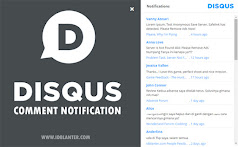The most recent release of Android 1.6, a.k.a. Donut, introduces accessibility features designed to make Android apps more widely usable by blind and low-vision users. In brief, Android 1.6 includes a built-in screenreader and text-to-speech (TTS) engine which make it possible to use most Android applications, as well as all of Android's default UI, when not looking at the screen.
Android-powered devices with Android 1.6 and future software versions will include the following accessibility enhancements:
- Text-to-Speech (TTS) is now bundled with the Android platform. The platform comes with voices for English (U.S. and U.K.), French, Italian, Spanish and German.
- A standardized Text To Speech API is part of the Android SDK, and this enables developers to create high-quality talking applications.
- Starting with Android 1.6, the Android platform includes a set of easy to use accessibility APIs that make it possible to create accessibility aids such as screenreaders for the blind.
- Application authors can easily ensure that their applications remain usable by blind and visually impaired users by ensuring that all parts of the user interface are reachable via the trackball; and all image controls have associated textual metadata.
- Starting with Android 1.6, the Android platform comes with applications that provide spoken, auditory (non-speech sounds) and haptic (vibration) feedback. Named TalkBack, SoundBack and KickBack, these applications are available via the Settings > Accessibility menu.
- In addition, project Eyes-Free (which includes accessibility tools such as TalkBack) provides several UI enhancements for using touch-screen input. Many of these innovations are available via Android Market and are already being heavily used. We believe these eyes-free tools will serve our users with special needs as well.






.jpg)


Warning !!!
=> Mohon memberikan komentar yang sopan dan ramah,
=> YOKO LIEM berhak menghapus komentar spam, komentar yang berisi link, atau komentar yang tidak senonoh,
=> YOKO LIEM sangat menghargai keramahan komentar Anda,
=> YOKO LIEM akan berusaha untuk menanggapi komentar Anda dan mengunjungi balik,
Terima kasih sudah berkunjung ^_^
`````Jika anda tidak belajar mencintai diri sendiri terlebih dahulu anda tidak bisa mencintai orang lain`````